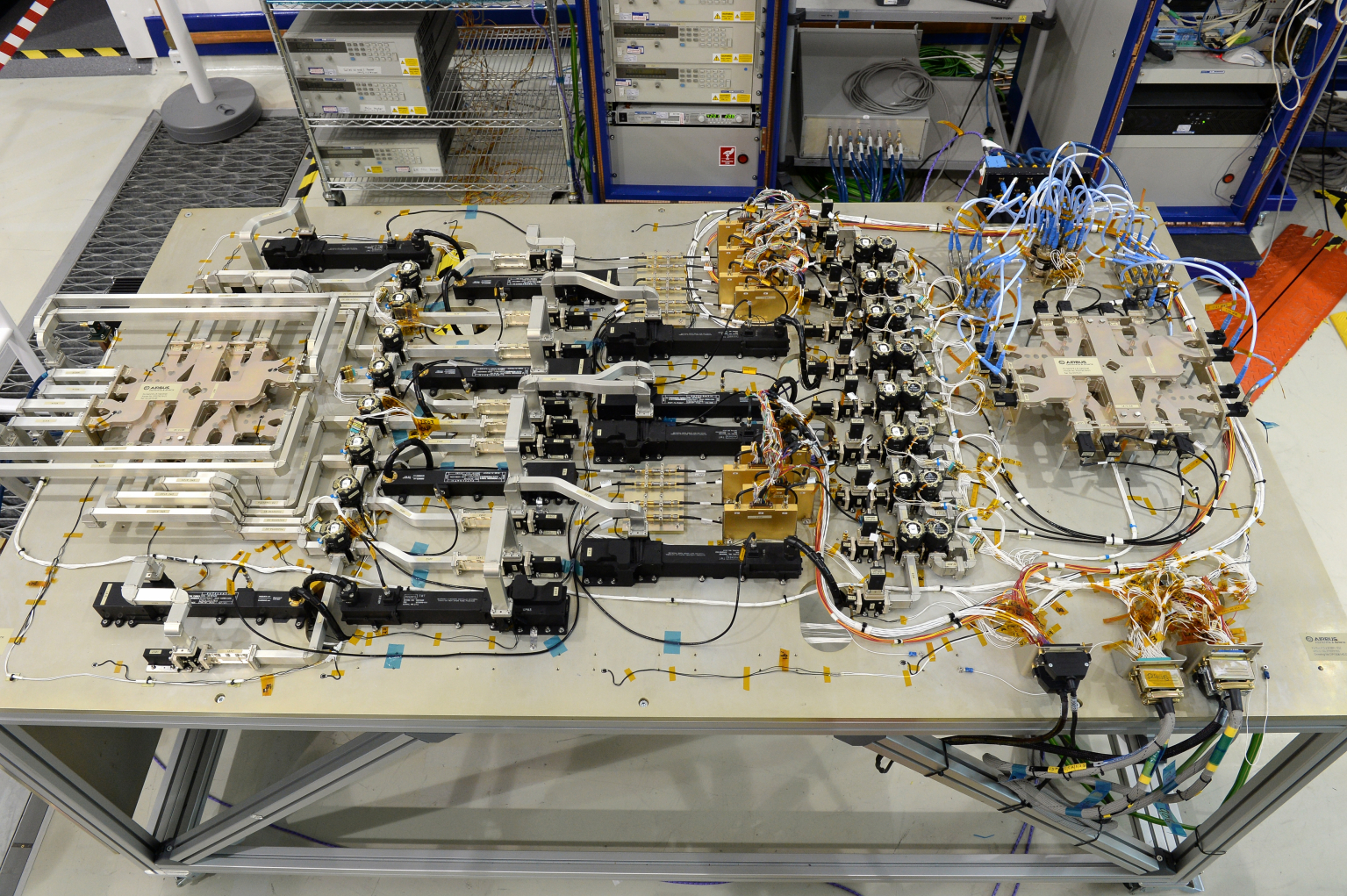-
StatusCompleted
-
Status date2017-10-24
-
Activity Code5C.242
The objective of the project is to develop and build an EM MPA operating in the Ku-band, in order to identify and overcome any problems that may occur with a flight design. Consequently, the EM is closely representative of a flight design, contains flight representative equipment, has a layout that respects typical flight designs, and includes redundancy switching as commonly implemented on payload designs.
Key aspects of the design are the development of new equipments, not currently available for space use. These are the Ku-band INET and ONET, and further equipment to provide a phase and gain adjustment function, and to provide linearisation of the TWT amplifiers used in the EM design.
A calibration approach for the MPA has been identified, and the performance of this approach is being analysed and validated as part of the project.
The testing of the EM MPA is designed to represent typical satellite operational conditions, so includes thermal variations, capabilities of the calibration system to mitigate variations of the phase and gain balance within the MPA, impacts of redundancy switching and realistic traffic signals through the MPA.
Multiport amplifiers are of interest to satellite operators since they allow the available transmit power to be treated as a ‘power pool’, which can be directed to coverage areas as needed, rather than being hardwired. This capability provides a high level of in-orbit reconfigurability, to address changing operational needs. Conditions which change on a daily basis (e.g. to support air traffic control and services) and on a longer basis (e.g. the need for rapid deployment, or for evolutions in the traffic demand profile over satellite mission lifetime) can be supported more efficiently than traditional systems.
The Ku-Band MPA Engineering Model includes the following components:
- An input Butler Matrix to divide the MPA input signals amongst the available signal amplification paths.
- Controlled signal paths, including phase and gain adjustment, to maintain relative phase and amplitude balance within the MPA internal signal paths over the satellite life
- High power travelling wave tube amplifiers to provide signal amplification
- An output Butler Matrix to recombine the amplified signals into the individual signal parts.
- A calibration system to calibrate the MPA during operation
Switching to allow redundant amplifiers to be utilised in the event of natural failures over life.


The project comprises the following phases:
- Baseline design to identify the component and equipment requirements of the EM MPA.
- Detailed design to predict the MPA performances, specify the test regime, define the details of the calibration scheme and supply the components and equipments required for the EM build
- Manufacture and integration of the EM MPA
- Alignment and test of the EM MPA
- Evaluation and final analysis of the MPA performance
The project is now complete. The fully redundant flight representative 400W 8x8 Ku-band Engineering Model MPA has been designed and built by AIRBUS D&S using flight, ex-flight stock or flight representative equipment throughout, in particular the performance critical AIRBUS D&S designed INET and ONETs.
The MPA has been aligned for wideband operation allowing performance to be maintained over the entire Ku-band 10.7 to 12.75GHz downlink band for all beams and redundant configurations without the need for adjustment, calibration or operator intervention.
The measured performance of the MPA shows excellent wideband characteristics; excellent Isolation performance has been measured and output losses are lower than expected. Overall, the MPA gain variation and linearity performance has been shown to be better than that of the individual paths and the performance has been shown to be stable in the presence of thermal variations.
Traffic tests have been performed demonstrating successful multi-beam operation at high drive levels for a variety of waveforms with little or no degradation.
The MPA design incorporates a gain and phase adjustment facility and a simple but effective calibration process has been demonstrated allowing the isolation performance to be maintained throughout the lifetime of the satellite.



